Social commerce is becoming a crucial part of the holiday shopping experience, especially in 2024-2025.
With fewer days between Thanksgiving and Christmas and increased consumer debt, brands must focus on pricing strategies and leverage personalized selling tactics to attract cost-conscious shoppers.
Let’s explore how social commerce is shaping consumer behavior and what brands should expect this holiday season.
- 1. Social Commerce Adoption and Growth
- 2. Social Commerce as a Discovery Tool
- 3. The Seamless Shopping Experience on Social Media
- 4. Social Commerce Fuels Impulse Buying
- 5. Impact of Peer Recommendations and Influencer Marketing on Holiday Shopping
- 6. Live Commerce as a Growing Trend
- 7. Holiday Shopping Trends on TikTok
- 8. Innovative Shopping Experiences
- 9. Key Benefits of Social Commerce for Holiday Sales
- 10. Barriers to Social Commerce Adoption
- How to Get Started With Social Commerce?
- How to Get Started with Vimmi
- Leveraging Social Commerce for a Successful Holiday Season
1. Social Commerce Adoption and Growth
Significant Growth in Social Commerce Revenue
Social commerce is now part of mainstream e-commerce.
In 2023, social commerce generated $75.6 billion in revenues in the U.S. alone, a 38.31% increase over the previous year ($54.68 billion in 2022).
With more consumers turning to platforms like TikTok, Instagram, and Facebook for their holiday shopping, we expect this trend to continue into 2024.
Social commerce is forecasted to generate $2 trillion by 2025, representing 28% of online global retail sales.
This trend will be driven by partnerships and integration of social shopping functionalities offering brands the opportunity to turn engagement into transactions.
High Engagement on Social Platforms
According to Deloitte, nearly 60% of the global population are active social media users, spending an average of 2.5 hours a day on social channels.
With consumers spending more time on social media, brands can engage with them directly through shoppable posts, influencer campaigns, and live commerce.
TikTok maintains a strong average engagement rate by followers of 2.65%, surpassing Instagram’s 0.70%, Facebook’s 0.15%, and Twitter’s 0.05%, despite a general decline in social media engagement, according to Social Insider.
2. Social Commerce as a Discovery Tool
64% of digital buyers discover new products via social media, and platforms are evolving into one-stop shops.
Consumers now discover, interact with, and purchase products all within the app, reducing drop-offs and friction in the purchase journey.
TikTok, in particular, acts as a discovery engine, with 91% of TikTok users continuing their purchase journey after discovering products on the platform.
Not only that, 40% of people in the US who made a Christmas purchase said they bought products after seeing it on TikTok.
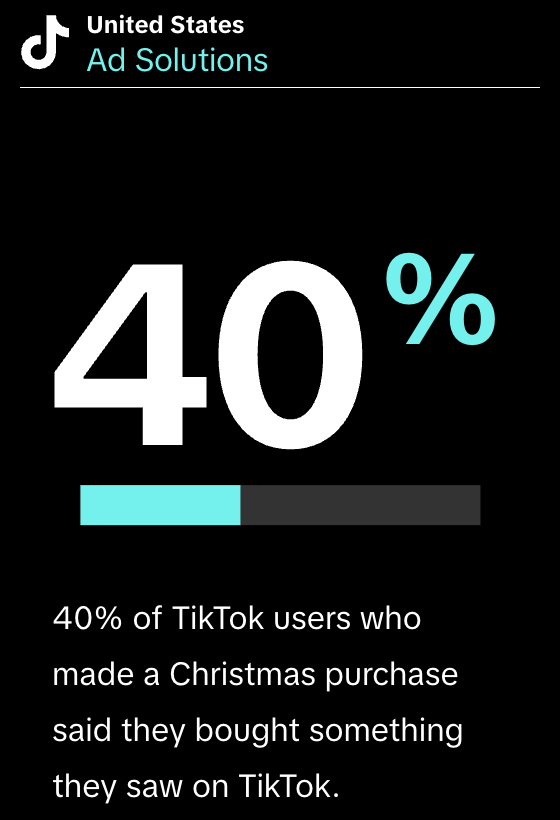
TikTok users are 1.3 times more likely to discover and immediately purchase something they find on the platform.
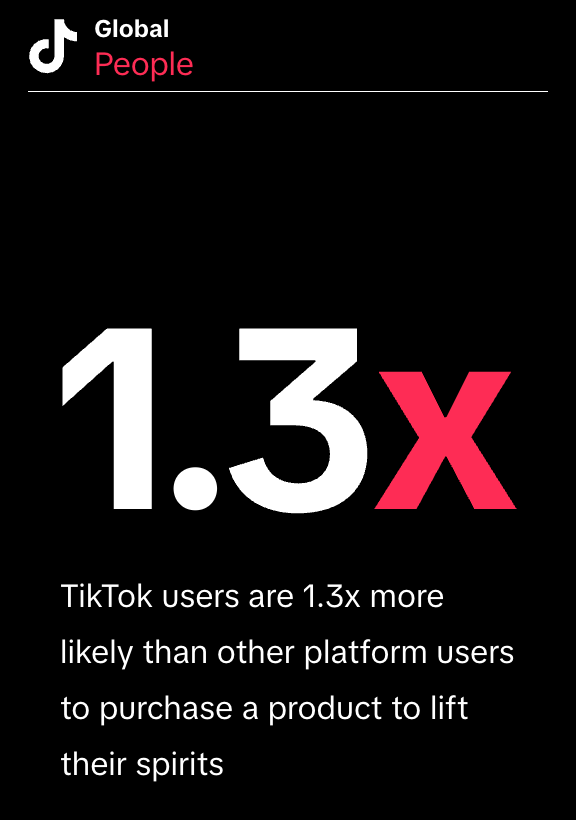
Driving Holiday Purchases
Social media is becoming a key tool for holiday shopping inspiration.
42% of Gen Z consumers in the US have admitted to using social platforms for buying gifts in 2024, with 26% of millennials, 15% of Gen Xers and 6% of baby boomers planning to use social commerce for their holiday purchases.
Among platforms, 57% would buy holiday gifts via Instagram, 56% via Facebook, 43% via TikTok, and 38% via YouTube.
3. The Seamless Shopping Experience on Social Media
Streamlined Shopping Journeys
Social commerce thrives because of its frictionless shopping experience.
Platforms like TikTok and Instagram allow consumers to discover a product, watch a demo, and make a purchase without leaving the app. This ease of use encourages impulse buys and simplifies the customer journey.
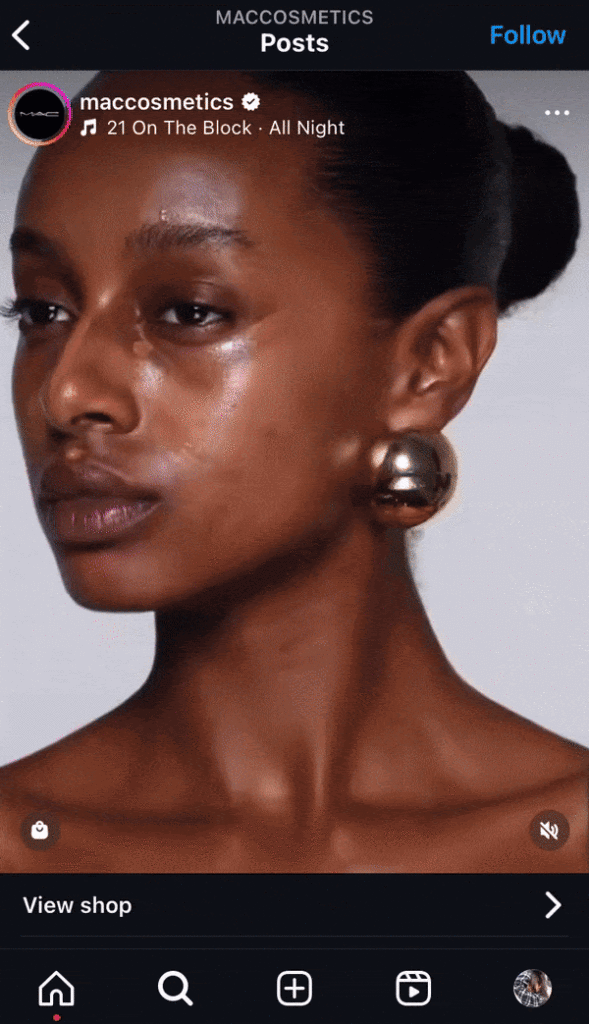
Reducing Friction in the Buying Process
With traditional e-commerce, consumers often encounter multiple steps before checkout, which can lead to cart abandonment.
Social commerce removes these barriers, offering a “see it, click it, buy it” experience that streamlines the purchase process.
4. Social Commerce Fuels Impulse Buying
Instant Gratification
Social commerce feeds into the consumer desire for instant gratification, especially during the holidays when shoppers are looking for last-minute gifts.
The combination of seamless in-app transactions and personalized advertising makes social platforms ideal for driving impulse purchases.
Of all social media platforms, TikTok ranks #1 when it comes to unplanned and impulse buying.
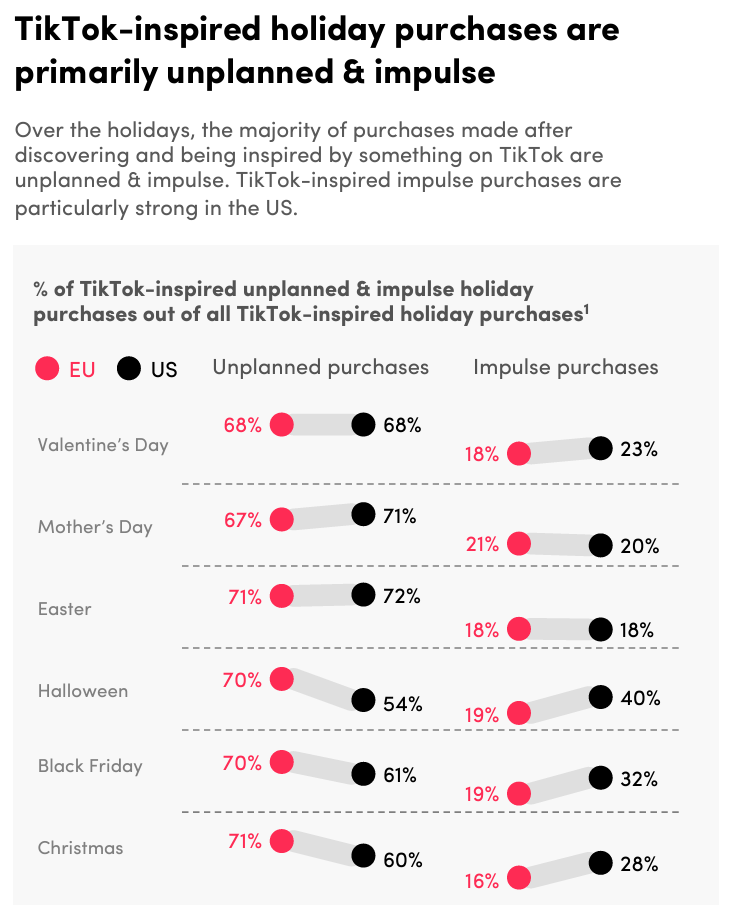
The following image presents data on TikTok-inspired holiday purchases, highlighting that these purchases are mainly unplanned and impulsive. TikTok-inspired impulse buying is, in fact, stronger in the US compared to other countries.
5. Impact of Peer Recommendations and Influencer Marketing on Holiday Shopping
The power of peer recommendations is magnified through influencer marketing. 69% of consumers trust product recommendations from influencers, making it a valuable tool during the holiday season. Brands should focus on building authentic relationships with influencers to boost credibility and drive conversions.
67% of social media users are more likely to consider a brand if it’s promoted by their favorite influencer, and 41% of global shoppers want to purchase products directly from influencers.
Consumers are most attracted to the following influencer personalities on social media:
- Relatable (61%),
- Expert (43%),
- Just-for-fun (32%),
- Aspirational (28%).
When learning about a company, product, or brand, 39% of consumers prioritize authenticity.
Brands will increasingly collaborate with influencers to create authentic connections and drive conversions during the holiday season.
6. Live Commerce as a Growing Trend
Live commerce is becoming more popular, particularly on platforms like TikTok and Instagram.
Brands are already experimenting with live shopping events that showcase products in real time, providing a more interactive shopping experience.
40% of global shoppers are interested in live shopping, which allows brands to demonstrate their products in real time and answer customer questions. This real-time interaction drives higher engagement and immediate purchase decisions.

While China remains the leader in live shopping, shopping via online streams is growing in popularity in the U.S., with sales reaching $50 billion in 2023 and expected to increase by 36% by 2026.
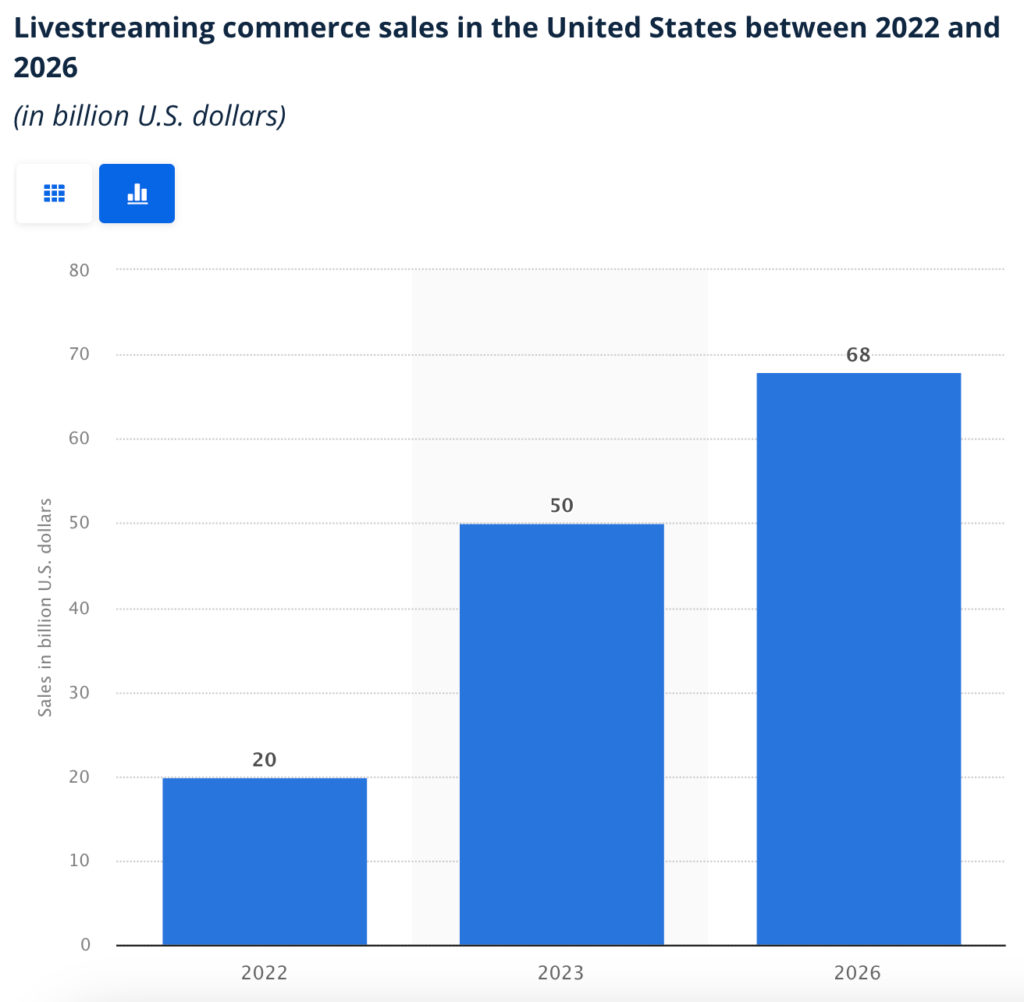
The appeal of live commerce includes exclusive discounts, inspiration, and entertainment, particularly for Gen Z.
7. Holiday Shopping Trends on TikTok
TikTok has revolutionized the way consumers shop online, particularly during the holidays. From influencer-driven trends to community-based recommendations, here’s what to expect in 2024-25:
Trend-Based Shopping and Viral Products
TikTok is known for creating viral shopping moments through hashtags like #TikTokMadeMeBuyIt.
According to TikTok’s 2024 Shopping Trend Report, 45% of users are more likely to seek additional information or make a purchase after discovering products on TikTok.

Emotional Shopping and Community Influence
TikTok communities are now playing a key role in influencing purchase decisions.
Consumers seek out shopping experiences that offer joy and relief from the overwhelming holiday sales environment.
TikTok campaigns that focus on fostering a sense of community and joy will likely succeed during this period.
Shopping Across Borders
TikTok is also facilitating cross-border shopping, with 74% of users feeling connected to people from different cultures.
This enables brands to tap into new markets by showcasing trending products from different regions.
8. Innovative Shopping Experiences
As we head into the 2024-25 holiday season, innovative shopping experiences will take center stage.
Consumers are no longer satisfied with static product pages—they want interactive and immersive experiences that make shopping fun.
Augmented Reality (AR) and Virtual Shopping
60% of global shoppers are interested in AR-driven shopping experiences, allowing them to try on products virtually before purchasing.
This trend is particularly strong in fashion and beauty, where brands like Puma and Clinique have successfully used AR filters.
AI Eases Everyday Shopping
AI is also becoming more integral to the shopping process, helping consumers make faster and more informed purchase decisions.
57% of TikTok users are interested in AI tools that simplify the decision-making process, from styling outfits to recommending home decor.
| Fun Fact: Vimmi users can already enjoy this benefit by enabling AI product recommendations that boost sales. |
Group Buying and Social Shopping
Group buying, a model that incentivizes shoppers to make purchases together for discounts, is gaining traction, especially in markets like China. This trend is expected to spread globally as consumers look for cost-saving opportunities during the holiday season.
9. Key Benefits of Social Commerce for Holiday Sales
Increased Brand Awareness
Social commerce isn’t just about selling—it’s a tool for building brand awareness. By engaging with consumers in the social spaces they already inhabit, brands can raise their profile while driving conversions.
Enhanced Consumer Insights
Social commerce also provides brands with valuable insights into consumer behavior. By analyzing engagement on social platforms, brands can better understand what products resonate with their target audience and optimize their strategies accordingly.
10. Barriers to Social Commerce Adoption
Trust Issues
Despite the rise of social commerce, 54% of consumers still express concerns about the legitimacy of brands selling on social platforms.
To overcome this, brands must focus on building trust through transparent business practices, verified profiles, and strong customer service .
How to Get Started With Social Commerce?
As social commerce continues to grow, having the right tools to optimize video content and create shoppable experiences is essential.
Vimmi provides brands with powerful solutions to integrate product videos and live events seamlessly into their social commerce strategies, helping to engage audiences and drive conversions.
Here’s how Vimmi can help brands succeed:
1. Seamless Integration:
Vimmi integrates with popular e-commerce platforms like Shopify and WooCommerce, while also connecting with social media platforms such as Instagram, TikTok, and YouTube. This allows brands to embed shoppable videos and links across multiple channels effortlessly.
2. Shoppable Videos and Live Events:
Brands can create engaging product videos with Vimmi’s tools, turning them into shoppable content by embedding product links directly into the videos. Additionally, Vimmi supports shoppable live events, where consumers can purchase products in real-time during live-streamed sessions.
3. Data-Driven Insights:
Vimmi’s analytics dashboard offers real-time metrics on video engagement and sales, allowing brands to optimize their social commerce strategies and improve conversions.
How to Get Started with Vimmi
1. Create and Verify Your Account:
Set up an account on Vimmi, choose your store platform or select I don’t have a store to get started with a new store provided by Vimmi.
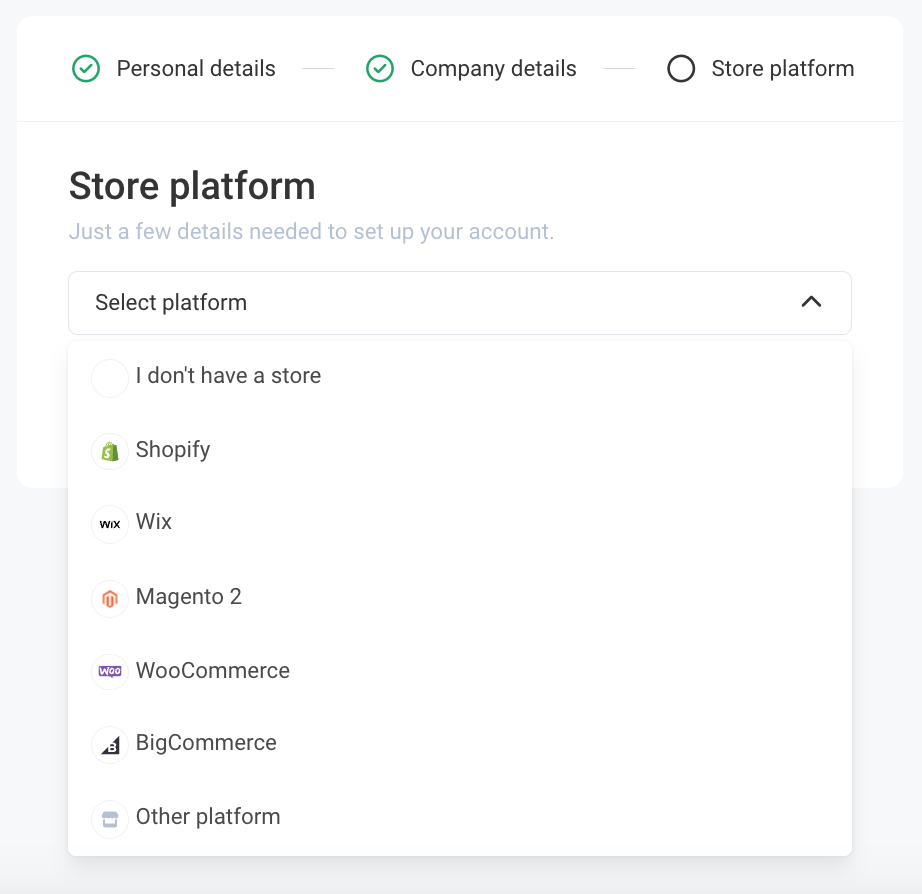
Next, connect your active social media profiles, and import your product catalog from your e-commerce store or upload a CSV file.
2. Create Shoppable Content:
Produce videos or host live events, copy the embed code to make the content interactive and ready for purchase.
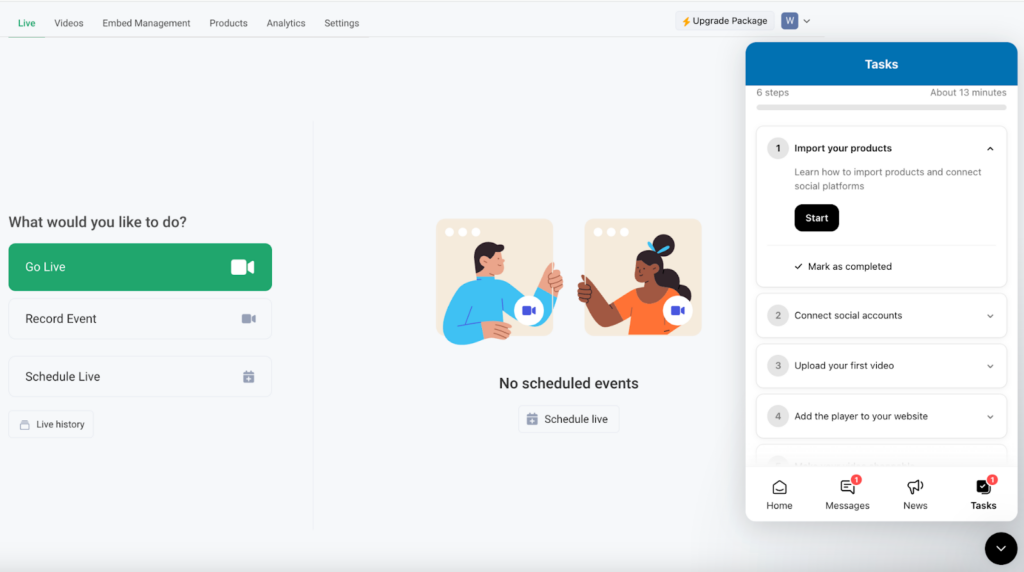
3. Monitor and Optimize:
Use Vimmi’s analytics to track performance and refine your strategy for better engagement and sales.
Leveraging Social Commerce for a Successful Holiday Season
As social commerce continues to rise, brands must adapt their strategies to engage consumers where they spend most of their time—on social media.
By offering seamless shopping experiences, leveraging influencer partnerships, and building trust with their audience, retailers can tap into the growing potential of social commerce during the 2024-2025 holiday season.
Let Vimmi show you how easy and rewarding it can be.
Sign up for a free account now and see the results for yourself!
